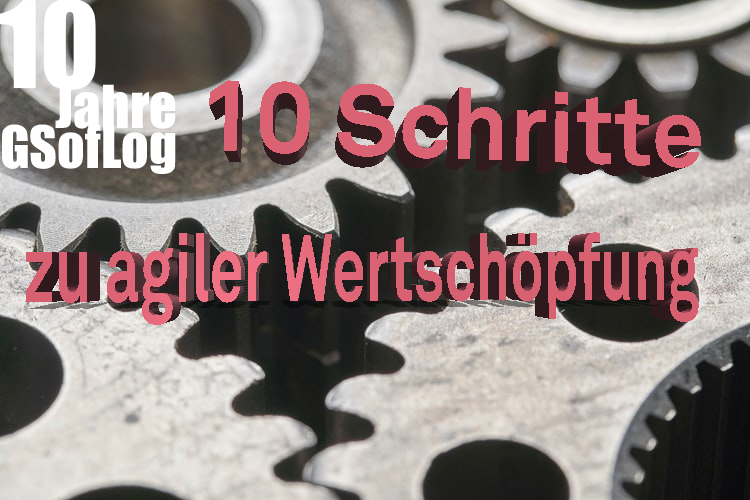Corona’s really thrown us off track. The pandemic forced us to react quickly and adapt our processes, especially in manufacturing companies. So we reorganized ourselves in a very short time. Everyday office life became home office, new shift schedules were created and in some cases entire production systems were converted so that the focus could be placed on urgently needed products. And: We were successful. Germany reacted flexibly and agilely to the challenge.
With the right attitude and the right design principles we are able to adapt. There are many innovations and technologies that support us in the design process. Now we have to stay on the ball and turn the crisis into an opportunity. That is why we have compactly summarized the ten steps to an agile value creation.
- Corporate Culture as a Basic Prerequisite for Change
With the right mindset, learn to see change as an opportunity and break new ground for a continuous improvement process. Attitude has a decisive influence on how you deal with the crisis. Focus on the possibilities and look for creative solutions. You have the chance to change your product portfolio, offer new services or adapt your processes. - Holistically Individual
Show a concrete common goal for strategic control and live the mindset. Give your employees the freedom to individually shape the path to the goal. You will be surprised how many constructive and agile implementation possibilities arise. The only important thing is that you protect your employees and take appropriate safety measures. - Self-Organisation Needs Leadership
Motivate and support your employees to take responsibility and make decisions. In these days we are dependent on employees organizing themselves. Good leadership is crucial to prevent chaos from reigning. - Proactive Avoidance of Fake News
Communicate openly, understandably and at eye level and thus create a trustworthy basis for collaboration in turbulent times. Fake news spreads like wildfire these days and unsettles employees. A clear address to the staff ensures a transparent information situation. Good communication leads to a faster/better reaction. - Labyrinth of Information
Reduce the complexity of the required knowledge and ensure availability independent of people in order to gain speed and sustainability. Due to the pandemic, a high level of sickness can occur and important employees can be absent. Often individual employees have knowledge that is not centrally accessible. - Highly Qualified Employees
Deploy your employees according to their abilities and develop them strategically. Your employees are your most valuable resource. Well-trained employees are particularly vital in times of crisis. Appreciation is the decisive keyword. It should continue beyond the crisis. - Transparency in the Fight Against Time
Now you can design processes as well as information about resources and requirements transparently in order to find the right set screws and readjust the production system quickly and at any time. Especially in the current bottleneck situation, it should be easy to detect deficits that would otherwise have gone undetected, for example, due to excessive inventories. - Quality Before Quantity
With the help of smartly defined goals and an intelligent performance measurement system, you can individually select the right agility levers for the desired adaptability. Not every lean method ensures that the company becomes leaner and more productive. It is much more a matter of the targeted selection of measures and methods in the context of a holistic optimization. - Innovative Technologies
Use digitization as an enabler for agile design principles for your familiar processes. We are already familiar with home office, online ordering, digital learning platforms and contactless payment. But there are still countless new technologies in the field of digitalization that can make our everyday life and production easier. With the help of additive manufacturing, for example, urgently needed protective equipment can be produced. - Logistics as a Decisive Competitive Factor
Logistics is largely invisible, but is largely responsible for the functioning of the value-added system. New logistics concepts can make planning, control and networking more flexible and adaptable. In this way, a continuous supply can be ensured – even in times of crisis. The last few weeks have turned some ways of thinking and standard processes upside down and brought to light an agile approach. Now we should stay on it and maintain a solution-oriented approach even after the crisis.
Our expert

Fraunhofer Institute for
Material Flow and Logistics
christina.radtke@iml.fraunhofer.de
